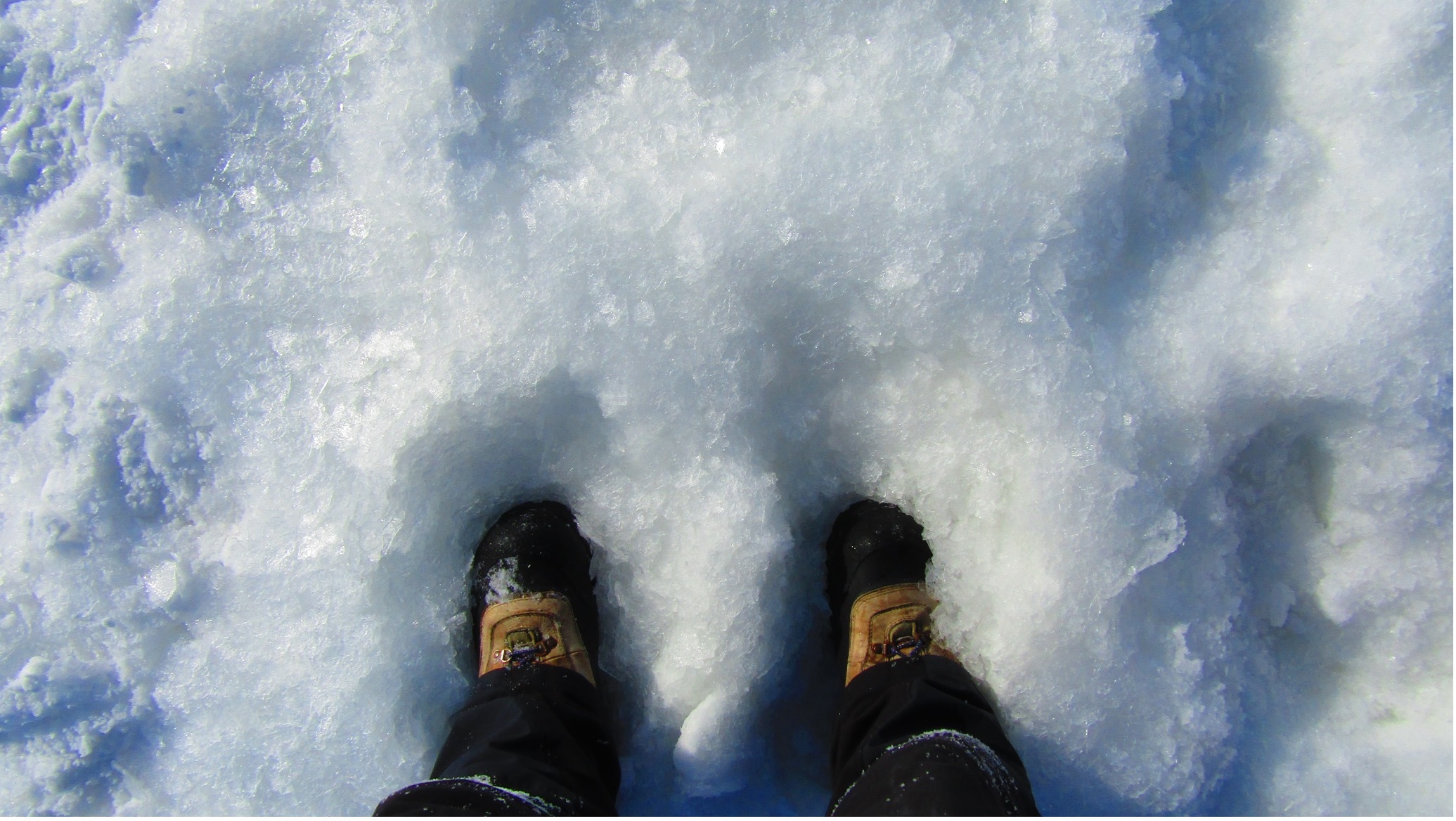
Geophysical assessment of fast ice and sub-ice platelet layer in Terra Nova Bay
Platelet ice is the crystallographic signature of glacial meltwater. It contributes to Antarctic fast ice volume and provides an important biological habitat – where is it and what can it tell us about the atmosphere-ocean-ice interactions driving its formation? Dr Gemma Brett aims to find out in this Opportunity Fund project.
Background
Interactive processes between sea ice, coastal polynyas, and land ice on the Antarctic coastline affect the mass balance of the Antarctic Ice Sheet, sea level rise and global ocean circulation.
Platelet ice is the result of deep-origin glacial meltwater, called Ice Shelf Water (ISW), formed through atmosphere-ocean-ice interactive processes. It accumulates into a mass of crystals called a sub-ice platelet layer (SIPL), an important biological habitat. Platelet ice can also contribute to the volume of Antarctic fast ice (i.e., sea ice attached to the coast).
Identifying ISW-influenced fast ice is necessary to enhance the understanding of ISW circulation and the regional atmosphere-ocean-ice processes driving its formation. Detailed platelet ice studies, quantifiably linking platelet ice volume to supercooled ISW outflow, have been carried out at only two regions – McMurdo Sound, Ross Sea and Atka Bay, Weddell Sea. But, there is a critical need for field measurements in unobserved regions.

The PI surrounded by platelet ice crystals freshly bailed from a hole drilled in fast ice in McMurdo Sound. These crystals were formed in supercooled ice shelf water produced through basal melting of land ice at depth. The crystals can accumulate into thick sub-ice platelet layers beneath the solid fast ice. Photo: Gemma Brett
Research overview
Dr Brett was invited by Dr Sanghee Kim to join the Korean Polar Research Institute’s (KOPRI) ‘Coastal Marine Science Program’ to carry out the first ground-based electromagnetic induction assessments of fast ice and SIPL in Terra Nova Bay in October 2021.
In Terra Nova Bay (situated on the Victoria Land coastline in the northwest Ross Sea), a SIPL is observed beneath fast ice near the Campbell Ice Tongue, indicating that supercooled ISW of a deep glacial origin is circulating in the upper surface ocean. However, platelet ice in this region has not been quantifiably assessed and the regional atmosphere-ocean-ice interactions driving its formation are not understood.
The research goals are to:
- investigate how the distribution of ISW-influenced fast ice and SIPL, assessed with single-frequency electromagnetic induction (EM), relate to regional polynya activity and ocean circulation;
- better constrain the physical properties of the SIPL and effects on biology by developing multi-frequency electromagnetic (EM) techniques; and
- carry out the first satellite altimetry assessment of ISW-influenced fast ice in the northwest Ross Sea and validate with rare in situ measurements.

Left: Study region (blue square) in Terra Nova Bay on MODIS satellite image. Right: Fast ice in Gerlache Inlet with EM survey tracks, drill hole sites, and Jango Bogo Station shown on LandSAT-8 satellite image acquired on November 5th 2021.
In November 2021, Dr Brett, ASP-funded PhD researcher Natasha Gardiner (Canterbury University), Professor Ian Hawes (Waikato University) and Dr Sanghee Kim of KOPRI flew south with the Italian Air Force to KOPRI’s Antarctic base Jang Bogo in Terra Nova Bay. There they carried out drill hole and ground-based single- and multi-frequency electromagnetic (EM) measurements of the thickness distributions of Ice Shelf Water (ISW) influenced fast ice and sub-ice platelet layer (SIPL).
Platelet ice observations are spatially and temporally sparse on the Antarctic coastline. This research will enhance the understanding of interactions between the ocean, sea ice, polynyas, and land ice, and the role of the SIPL as a biological habitat. It will develop innovative geophysical and satellite techniques for platelet ice assessment, and extend the field capability of the Antarctic Science Platform into the northwest Ross Sea.

Left: Dr Gemma Brett, Professor Ian Hawes, Dr Sanghee Kim and PhD Candidate Natasha Gardiner on the fast ice in Terra Nova Bay in November 2021. Right: Dr Brett measuring fast ice and the sub-ice platelet layer thicknesses. Photos: Natasha Gardiner
Collaborators
- Dr Sanghee Kim of KOPRI, PI of the ‘Coastal Marine Science Program’ and Prof. Ian Hawes (University of Waikato) for biological expertise.
- Natasha Gardiner, PhD Candidate at Gateway Antarctica, University of Canterbury for science-policy expertise, field member, and overall project support.
- Prof Wolfgang Rack (University of Canterbury) for satellite remote sensing and multi-frequency EM development.
- Prof. Christian Haas and PhD Candidate Mara Neudert (Alfred Wegener Institute), Dr Anne Irvin (Memorial University), Dr Pierre Roudier (Manaaki Whenua | Landcare Research) and Dr Fernando Santos (University of Lisbon) for multi-frequency EM technique development.
- Prof. Pat Langhorne (University of Otago) for platelet ice expertise.
- KOPRI for full logistic support.
- Clothing and MIQ facility provided by Antarctica New Zealand.